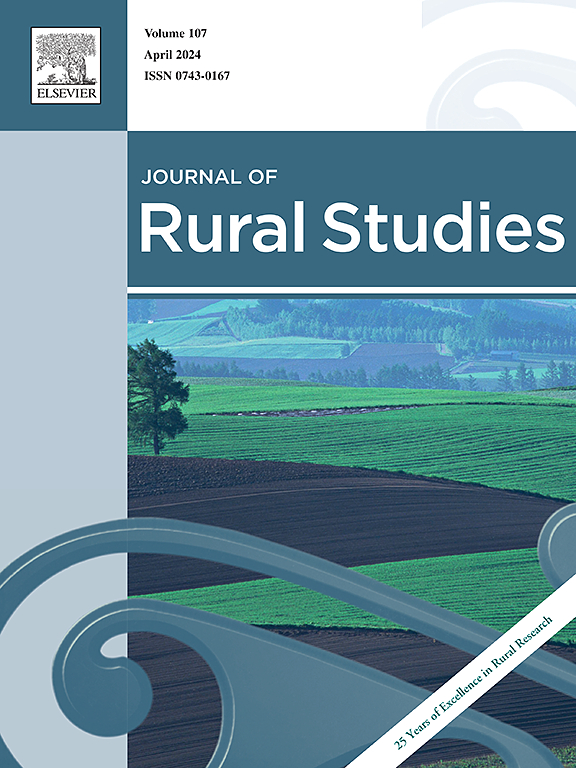Interconnected water scarcities and environmental amenities migration in rural Chile
IF 5.1
1区 社会学
Q1 GEOGRAPHY
引用次数: 0
Abstract
This paper explores the repercussions of amenity migration on rural communities' access to water through a comparative analysis of three case studies in Chile. It examines the concept of rural drinking waterscapes to elucidate how access to water is dependent upon a metabolic process, wherein social, political, economic, and technical elements contribute to the construction of rural landscapes. This notion implies paying close attention to the daily practices of water access at the household level through ethnographic methods (multiplying interviews and observations), thus uncovering unregulated water habits and uses. The results underscore the pivotal role played by the State in shaping the desirability of these localities, attracting both capital and upper-class population influx. This socio-demographic shift triggers significant changes in land-use patterns, resulting in an amplified and diversified demand for water. The study identifies that water scarcity is a multifaceted issue, stemming from the intricate interplay of various scarcities occurring simultaneously across different scales. These include: 1) infrastructure scarcity, arising from households' inability to connect to the communal water network; 2) service management scarcity, induced by operational failures that reduce water pressure or increase supply interruptions; 3) economic scarcity, resulting from water organisation budget constraints or residents’ inability to meet water bills; and 4) overexploitation scarcity, emanating from the excessive consumption of groundwater resources. Notably, these different forms of scarcity are interconnected. The responses of local populations and governing committees are identified as central to this intricate chain of causation, as they can inadvertently create new scarcity scenarios and exacerbate inequalities.
智利农村地区相互关联的水资源短缺和环境设施迁移
本文通过对智利三个案例研究的比较分析,探讨了便利性迁移对农村社区用水的影响。本文探讨了农村饮用水景观的概念,以阐明获取水资源如何依赖于一个新陈代谢的过程,其中社会、政治、经济和技术要素共同构建了农村景观。这一概念意味着要通过人种学方法(多重访谈和观察)密切关注家庭层面的日常用水实践,从而揭示不规范的用水习惯和用水方式。研究结果强调了国家在塑造这些地方的可取性、吸引资本和上层阶级人口涌入方面所发挥的关键作用。这种社会人口结构的转变引发了土地使用模式的重大变化,导致了对水需求的扩大和多样化。研究发现,水资源短缺是一个多层面的问题,源于在不同范围内同时发生的各种稀缺现象之间错综复杂的相互作用。其中包括1) 基础设施稀缺,源于家庭无法连接到公共供水网络;2) 服务管理稀缺,源于运行故障导致水压降低或供水中断增加;3) 经济稀缺,源于供水组织预算紧张或居民无力支付水费;以及 4) 过度开发稀缺,源于地下水资源的过度消耗。值得注意的是,这些不同形式的匮乏是相互关联的。当地居民和管理委员会的反应被认为是这一错综复杂的因果链的核心,因为他们可能在无意中造成新的稀缺情况并加剧不平等。
本文章由计算机程序翻译,如有差异,请以英文原文为准。
求助全文
约1分钟内获得全文
求助全文
来源期刊

Journal of Rural Studies
Multiple-
CiteScore
9.80
自引率
9.80%
发文量
286
期刊介绍:
The Journal of Rural Studies publishes research articles relating to such rural issues as society, demography, housing, employment, transport, services, land-use, recreation, agriculture and conservation. The focus is on those areas encompassing extensive land-use, with small-scale and diffuse settlement patterns and communities linked into the surrounding landscape and milieux. Particular emphasis will be given to aspects of planning policy and management. The journal is international and interdisciplinary in scope and content.
 求助内容:
求助内容: 应助结果提醒方式:
应助结果提醒方式:


